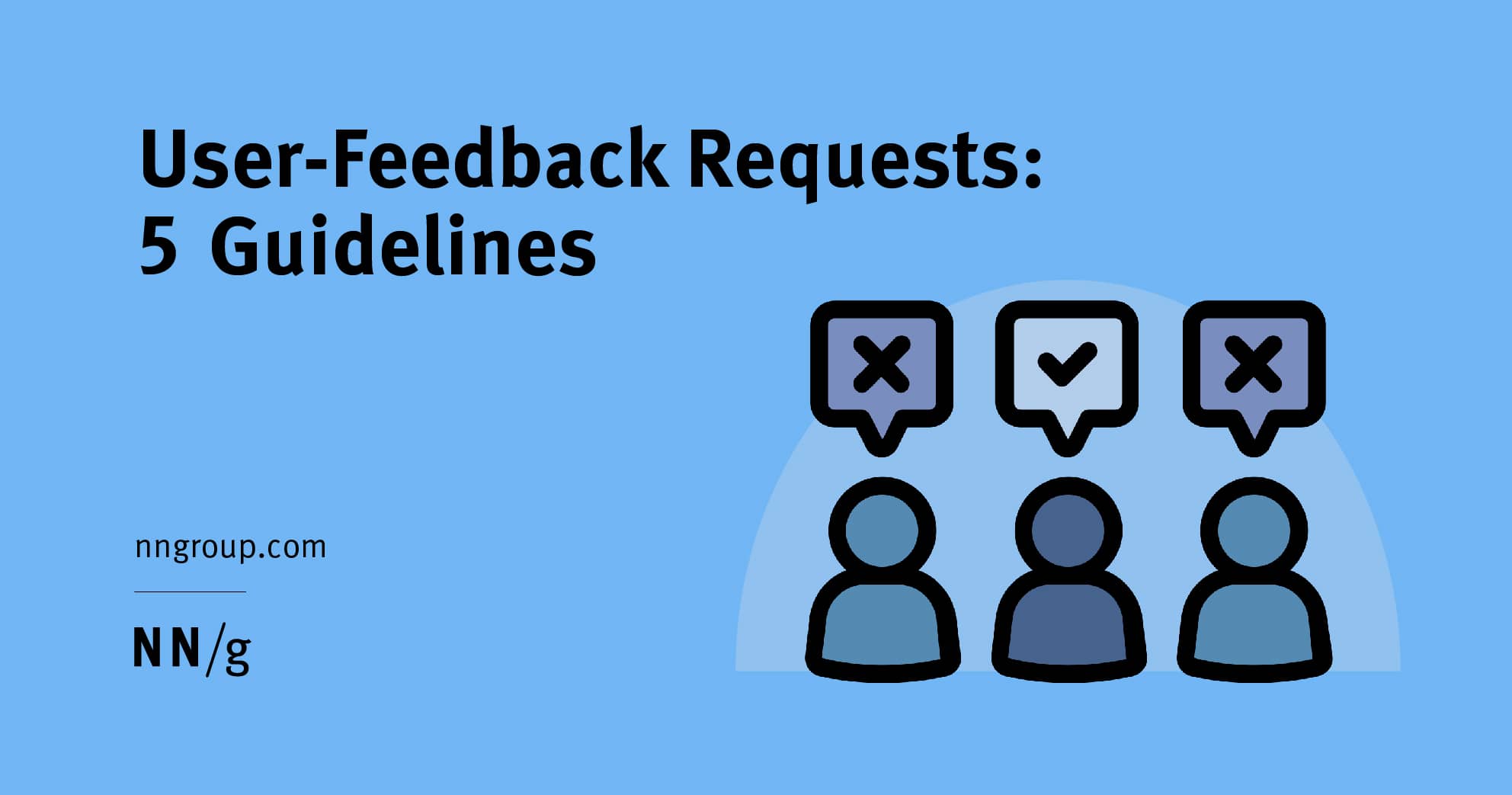User-Feedback Requests: 5 Guidelines

Table of Contents:
-
Tailor the Timing of the Ask
-
Send the Survey to the Right Channel
-
Keep Surveys Short and Simple
-
Give Users Room to Share Details
-
Leverage Feedback for UX Research and Design Decisions
-
Tailor the Timing of the Ask:
- Don't interrupt the user's task with intrusive popups asking for feedback.
- Wait until the user has completed a meaningful task before requesting feedback.
- Consider asking for feedback during a natural break in the user journey.
- Send the Survey to the Right Channel:
- Don't send surveys to users who are unlikely to respond.
- Consider sending surveys through channels where users are already engaged, such as email or in-app notifications.
- Avoid sending surveys through channels that feel spammy or irrelevant to the user.
- Keep Surveys Short and Simple:
- Avoid overwhelming users with too many questions.
- Keep questions focused and easy to understand.
- Consider using a rating scale or multiple-choice options to make surveys more user-friendly.
- Give Users Room to Share Details:
- Provide an open-ended question where users can share additional thoughts or feedback.
- Encourage users to be as specific as possible about their experience.
- Avoid leading questions that might bias responses.
- Leverage Feedback for UX Research and Design Decisions:
- Use feedback surveys as a voice-of-customer (VOC) program.
- Analyze survey data to identify common pain points or areas of improvement.
- Use survey data to inform UX research and design decisions.